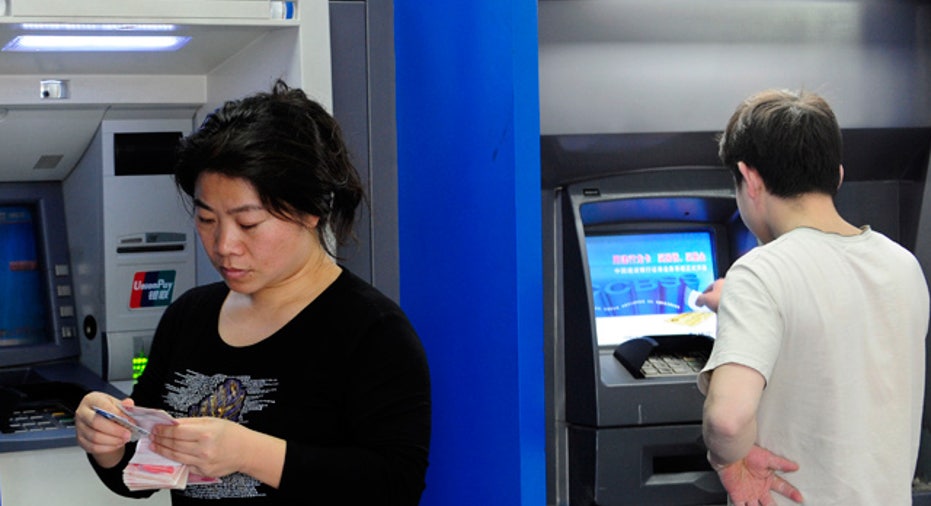Four Tried-and-True Ways to Slash Rising ATM Fees

It sounds like a familiar refrain, but some big banks are upping their ATM fees again.
These fees are aimed at folks who use outside ATMs. TD Bank now charges its customers $2 for withdrawals from ATMs outside its network. And HSBC has raised its fee from $2 to $2.50.
Keep this in mind: These are double-dose fees. They're added onto whatever the outside ATM owner charges. And these noncustomer fees reached record highs in 2011, according to the Bankrate 2011 Checking Survey. The average fee that banks charge noncustomers to use ATMs is $2.40.
These ATM fees also vary by locale. They're highest in Denver at $2.75. Seattle, San Diego and Houston also dinged ATM users with high fees. Cleveland charged the lowest fees: $2.06.
Behind this push are banks rooting around for more income. The Durbin Amendment (part of the Dodd-Frank Wall Street Reform and Consumer Protection Act) has taken effect, and it cuts bank interchange fees. These fees are charged to merchants for debit card payments. The result is that large banks could lose billions of dollars in income, so they're searching for ways to increase income by upping debit card or ATM fees.
To be sure, these higher ATM fees are avoidable, says Greg McBride, CFA, senior financial analyst at Bankrate.com. You can switch to community banks, credit unions or online banks that don't charge ATM fees and may not begin charging them because they're exempt from the Durbin Amendment, he says. Switching to cash, checks or credit cards also makes sense.
In addition, some banks lower fees for customers with large accounts or direct deposit. For example, HSBC USA reimburses Plus Banking customers for three withdrawals per month at outside ATMs. Bank reimbursement policies can vary, so it pays to read the fine print, McBride says.
"If you want to stay with your current bank, see how you can avoid fees," says Ed Mierzwinski, a consumer advocate at the U.S. Public Interest Research Group in Washington, D.C.
Still, switching banks to avoid fees isn't always the answer. Some customers with online banking or several accounts at one bank will find that getting disentangled is difficult. And switching also can cost you, including time spent finding a new account, Mierzwinski says.
So what's a consumer to do?
Here are four ways to avoid paying ATM fees.
Switch to a credit union. Because they are co-ops owned by depositors, credit unions usually charge fewer fees and they cost less -- even for using ATMs. Why? They rely on the 28,000-ATM Co-Op Network nationwide, which includes 5,500 7-Eleven stores. It's a surcharge-free system that's bigger than ones offered by Bank of America and JPMorgan Chase & Co.
You can even make deposits at some credit union ATMs, says Marsha Baker, who teaches consumer finance at Lindenwood University in St. Charles, Mo.
Get cash at grocery stores or drugstores. When making a purchase at a grocery store or drugstore, you can usually choose to also get cash. These withdrawals are free. Target and Wal-Mart stores also give you cash-back options.
Try online banks. Since they lack their own networks, online banks typically reimburse you for out-of-network charges. Others tap into large nationwide ATM networks that are bigger than what banks offer. For example, ING Direct banking customers can access the nation's largest surcharge-free network, Allpoint Network, which has 40,000 ATMs in 50 states. And Ally Bank reimburses customers who use any ATM nationwide. Charles Schwab also offers high-yield checking that reimburses you for ATM withdrawals made worldwide.
These days, some online banks let you download free smartphone apps for locating network ATMs. For example, ING Direct offers an ATM-finder app you can use to pinpoint any Allpoint ATM.
To counter growing bank fees, new resources are popping up. Take online financial services provider BankSimple. Still under development, its aim is helping you manage your money and bypassing bank fees. It also gives customers access to no-charge ATMs via Allpoint's network.
Plan out your cash needs. Taking out lots of cash at once also can help you budget better. With cash, you spend 10% to 15% less than with debit cards, says Baker. The trick is figuring out how much money you'll need a few days in advance.
Whichever method you opt for, avoiding out-of-network ATMs can save you big bucks over time.



















